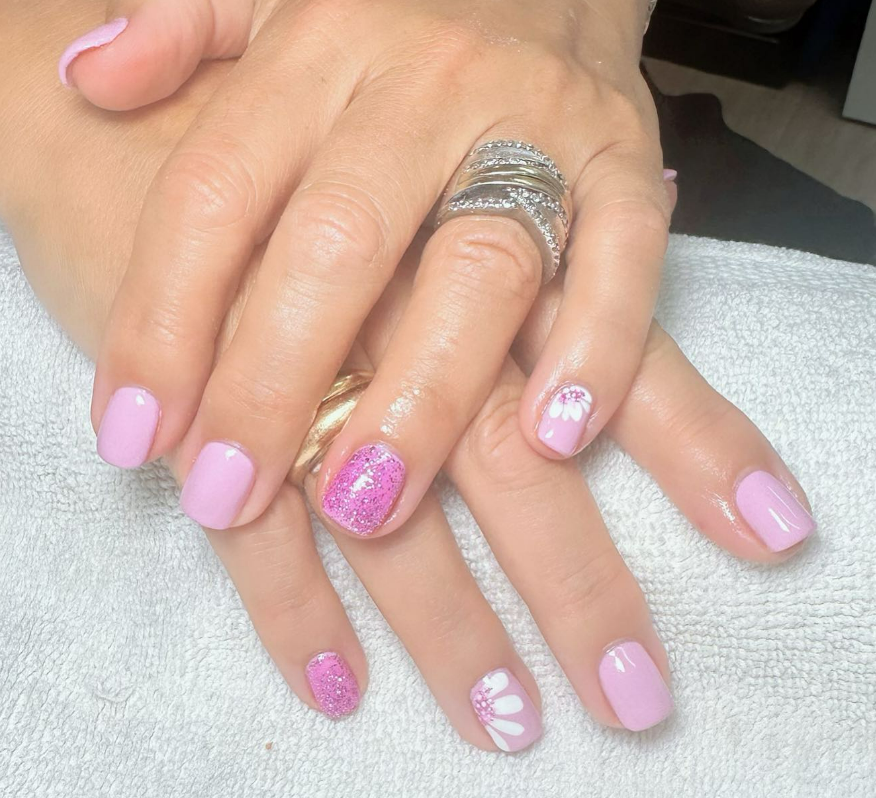Medical billing and coding is a very important job within the healthcare system.
Coders and billers work to record the details of a patient visit and submit that information to the insurance companies to get the proper payment for the medical office.
Employers are almost always looking for candidates with medical coding certifications and real-world hands-on experience, because this means they already understand how the process works.
But what if you are a newly certified medical coder and biller and you are trying to land your first job? What are some ways you can stand out from other candidates and secure a position?
We go into some practical advice you can follow to have better odds at getting your first job in medical billing and coding.
What Medical Coders and Billers Do
Each of these positions plays an important role in the physician’s office. Sometimes, this may be covered by the same person, in larger medical facilities, these roles are usually separated into different positions.
Medical coders turn all the details of a patient’s visit and the doctor’s treatment into a series of codes that tell the entire story. The details are transcribed using universally understood medical codes. These codes are used by health care providers, hospitals, insurance companies to create a record of a patient’s visit and submit an insurance claim. Each code has strict guidelines on how they can be used. Accuracy is important, and coders must understand how each code correlates to each detail.
Medical billers take the coded transcription of a patient visit and submit claims to the insurance company. They then follow up with both the insurance company and the patients to make sure the medical office is compensated properly, the patient is billed correctly, and timely payments are made.
Getting Your First Medical Billing and Coding Job
If you have medical coding and billing certification, you are qualified for an entry level job as a biller and coder. Most healthcare employers are also looking for candidates with strong critical thinking skills, the ability to self-manage, and some experience with data entry or clerical work. Here are some additional steps to securing your first billing and coding job.
1. Understand the Healthcare System, Highlight Your Strengths
The primary thing to understand is every medical office, every hospital, every clinic is still part of the healthcare business. The revenue cycle is the foundation of making sure the medical office stays profitable and can continue to operate. Medical coders and billers are the critical linchpin in that system, making sure the insurance companies pay the medical office on time.
This system often can’t slow down to train new people, so it’s important that you show you will be able to step into that system and fulfill your role without making errors. Employers are generally going to see experienced coders and billers as safer candidates than newly credentialled candidates. But there are things you can do to make your resume look less risky.
If you have previous experience in a clerical position, that can be a plus. If you have previous work experience where you had to focus on detail-oriented work, multitasking, or had to learn new systems quickly, those are things to highlight when you submit a resume. Previous jobs like administrative assistant, coding, call center, or IT can help show you can fit seamlessly into a medical office.
2. Highlight Your Soft Skills
Since you are applying for a new position as a medical biller or coder, and you don’t have previous experience in that role, any relevant skills you have to highlight will help you move to the interview stage.
Medical coding is a cognitive job, where you must match up what happened in a patient appointment to medical codes. This is a form of puzzle-solving or attention to detail. By providing examples of how you solved problems in other jobs or other areas, you can demonstrate that you will be a low-risk high-reward candidate. Think about situations where you had to use cognitive skills to solve a problem. Perhaps you are the go-to person in your family for IT solutions. Show you have problem-solving abilities and can work in a team or independently.
Medical billing is also a problem-solving position, but also requires a high degree of interpersonal communication skills. Can you work with other people to reach a solution? Have you done this at previous jobs? Showing you have the soft skills to be a team asset and can communicate effectively will help you land your first medical billing job.
3. Know Where to Apply, Do Your Homework
Earlier we talked about how healthcare facilities are looking for candidates who can fit seamlessly into a coding and billing process without a lot of training. Typically, this means they will be looking for experienced candidates first, but larger organizations will also have more room to take on new coders and billers.
Look for hospitals in your area which have just expanded or opened new facilities. New physician groups in your city? Brand new clinics? New managed care offices? These are all prime organizations where you can apply, your lack of hands-on experience won’t count against you. They will need the help and will have the staff to onboard you as a new employee.
You can also apply for positions at remote outsourcing companies for medical billing and coding. These companies may handle billing and coding for several medical facilities, and they are often looking for qualified and certified candidates. These companies are a viable way to get valuable experience.
4. Getting Your Foot in the Door
If you are in an area where there are not a lot of medical billing and coding jobs, you can still get experience with positions that are closely related. These are some entry-level jobs that have some adjacent skills to billing and coding.
- Medical Records Clerk
- Medical Office Receptionist
- Medical Transcriptionist
- Medical Billing Clerk
- Health Information Technician
These are healthcare jobs that are also closely related to medical records specialists, medical billing, and medical coding. These can help you gain some experience and get your foot in the door of healthcare employers.
5. Networking with Healthcare Professionals
Before you reach out to employers about a medical billing and coding job, it can be valuable to network with other healthcare professionals. The sooner you do this, the more of a head start you will have on other candidates. Preferably, you can do this when you enroll in a medical billing and coding training program.
Organizations such as the American Health Information Management Association (AHIMA) are places where you can network with other medical records professionals. Students can join this organization for $49 a year. The AMCP also has a comprehensive list of health information technology organizations in the US.
If possible, you might consider doing an internship for healthcare facilities near you, if those programs are offered. The goal is to get an inside track on available positions that are opening up soon. Talking to other healthcare professionals in your area is only going to help your chances of finding your first job and starting your career.
6. Practice Your Skills
Every professional gets better with practice, and if you do not have real-world hands-on experience, you can still practice medical coding. Keep up to date on medical terminology. Expose yourself to different medical coding cases and figure out how those would be coded in a real-world setting.
By keeping your medical coding skills sharp, you will be prepared when a potential employer gives you a medical coding test.
Is it difficult to get a medical coding job without prior experience?
Many healthcare organizations, especially larger ones, will have a need for entry-level medical coders. Getting your first job in billing and coding will be easier if you have already worked in a similar healthcare profession. Large organizations have more capacity to bring new billers and coders into their existing workflow. Smaller medical offices may prefer experienced candidates because they have hands-on experience. However, medical offices and facilities going through growth in business may also be very willing to hire a freshly credentialed coder or biller, because they need the help. Once you get your first billing and coding job, subsequent jobs should be easier to win.
What are medical coding jobs that would be considered entry-level?
Some healthcare jobs that are directly related to billing and coding may be an easier way to get your foot in the door and start getting experience right away. Some of these include medical records clerk, coding assistant, or medical transcriptionist. These are closely related to the skills students learn in medical billing and coding programs.
How much can you expect to earn when you start medical billing and coding?
According to May 2022 data from the Bureau of Labor Statistics [1], the median wage for all medical billers and coders in the US was $22.69 per hour and median annual salary was $47,180. The bottom 25% earned $18.04 per hour and $37,510 annually. The lowest 10 of all billers and coders in the entire United States earned $15.25 per hour and $31, 710 annually.
Billers and Coders salary, all US, May 2022
| Percentile |
10% |
25% |
50% (Median) |
75% |
90% |
| Hourly Wage |
$ 15.25 |
$ 18.04 |
$ 22.69 |
$ 28.93 |
$ 36.28 |
| Annual Wage |
$ 31,710 |
$ 37,510 |
$ 47,180 |
$ 60,170 |
$ 75,460 |
In California, the May 2022 data from the Bureau of Labor Statistics [2] showed the annual mean wage was $65,850, so entry level jobs would be less than this.
Billers and Coders salary and wage, California, May 2022 BLS data
| Mean Hourly Wage |
Median Hourly Wage |
Mean Annual Wage |
| $27.36 |
$31.66 |
$65,850 |
In California, July 2023 data from ZipRecruiter [3] showed the average wage for billers and coders in California was $22.88, and the bottom 25% earned $17.93 per hour. The top 10 cities for salary were more than this.
Billers and Coders hourly wage, California, July 2023 data from ZipRecruiter
| Bottom 25% |
Average 50% |
Top 75% |
| $17.93 |
$22.88 |
$22.93 |
The ZipRecruiter data from July 2023 [3] also showed that the median salary for medical billers and coders in California was $47,591, with the bottom 25% earning about $37,000 annually.
Billers and Coders annual salary, California, July 2023 data from ZipRecruiter
| Bottom 25% |
Average 50% |
Top 90% |
| $37,300 |
$47,591 |
$54,978 |
Earn Your Medical Billing and Coding Certification Online in About 40 Weeks
Working as a medical biller and coder is a good-paying job that allows most candidates to work from home and avoid commuting to a medical office. Getting your first medical coding job without prior work experience may seem like a challenge, but experience is not the only factor in getting hired. Being easy to work with and willing to learn new things will prove invaluable throughout your medical coding career.
To help you prepare for a medical billing and coding career, Campus offers a Medical Billing and Coding certification program that can be completed in as little as 40 weeks. This program is fully online; the coursework can be done entirely from any computer with a broadband internet connection.
If medical coding and billing is a career you want to pursue, contact our Admissions department today, and they can answer any questions you have about our accredited training program. The team at Campus is here to help you diligently prepare for a long, successful career in billing and coding.
[1] Bureau of Labor Statistics, https://www.bls.gov/oes/current/oes292072.htm , retrieved July 20, 2023
[2] Bureau of Labor Statistics, https://www.bls.gov/oes/current/oes_ca.htm , retrieved July 20, 2023
[3] ZipRecruiter , https://www.ziprecruiter.com/Salaries/Medical-Billing-Coding-Salary–in-California#Yearly , retrieved July 14, 2023
The post Getting Your First Medical Billing and Coding Job with No Prior Work Experience appeared first on Campus.
from Campus https://mticollege.edu/blog/healthcare/medical-billing-and-coding-professional/get-billing-coding-job-without-work-experience/















































